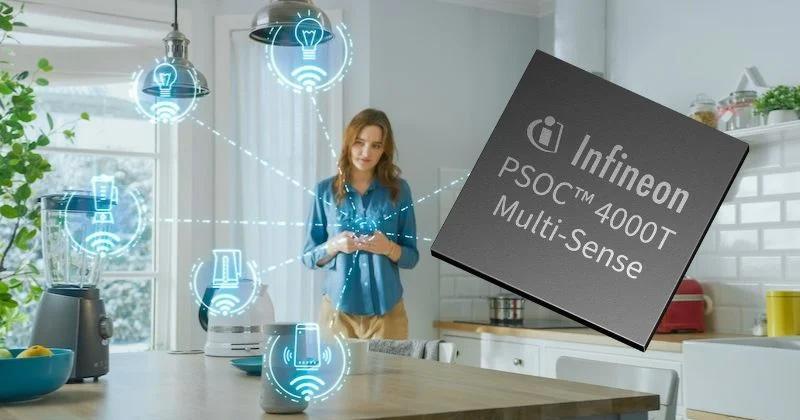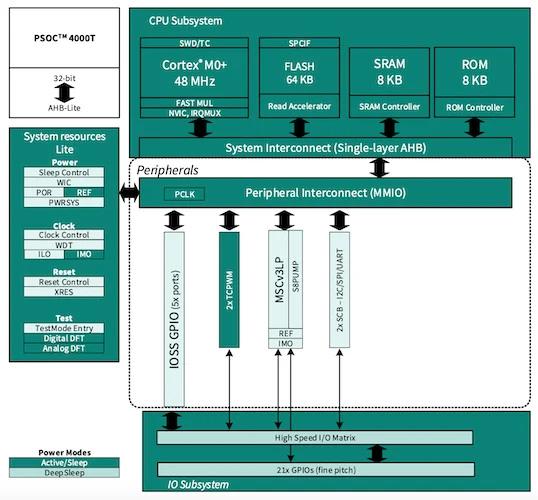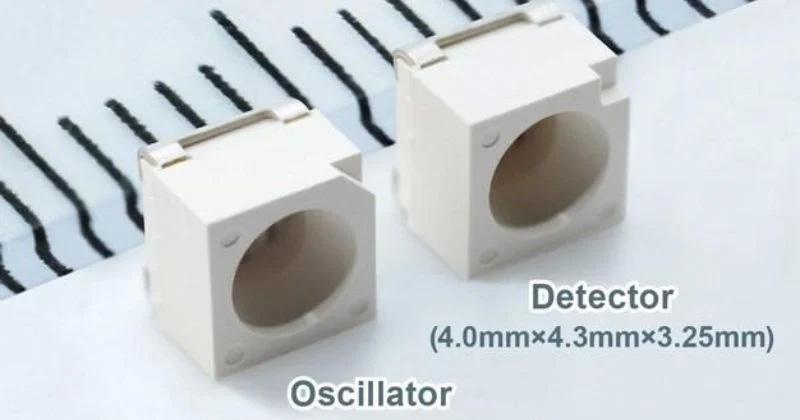
Infineon Blends Three Types of Touch Sensing in New PSOC MCU
Infineon Technologies recently released its newest PSOC 4 microcontroller (MCU) family, which now features Multi-Sense capabilities for sensing and human-machine interfaces (HMI). This new release builds upon the company’s proven capacitive sensing technology, Capsense, and adds a mix of inductive and liquid sensing solutions. This allows developers to create products with advanced sensing functions such as touch-over-metal, force-sensitive surfaces, and even non-contact liquid detection—all while significantly reducing costs and complexity.

The PSCO 4000T and PSCO 4100T Plus will be the first families to feature the fifth-generation Capsense and Multi-Sense technology.
Infineon claims this sensing technology will transform how industries approach product design and functionality.
What’s So Special About the PSOC 4 MCU?
The PSOC 4 Multi-Sense platform (datasheet linked) integrates three distinct sensing modalities, each engineered for optimal performance. The fifth-generation Capsense technology features “always on” technology, reducing the PSCO 4 MCU's power consumption tenfold while enhancing the signal-to-noise ratio by an order of 10x as well.
The platform also incorporates Infineon’s proprietary inductive sensing technology to address the current limitations of conventional inductive sensing, offering enhanced robustness and reduced susceptibility to environmental noise. This capability enables touch functionality through metallic surfaces, expanding design possibilities for durable and aesthetically-refined products, particularly in challenging environments.

Block diagram of the PSOC 4000T.
Finally, the PSOC 4 Multi-Sense suite includes non-invasive liquid sensing that utilizes artificial intelligence and machine learning algorithms to detect liquid levels without direct contact. It can even distinguish between liquid, foam, and residue, an advantage for sophisticated fluid management applications, such as automated beverage dispensers and robotic cleaning systems.
Infineon claims this non-contact liquid sensing function outperforms traditional mechanical and capacitive sensors in both accuracy and cost-efficiency. It can detect liquid levels with a 10-bit resolution and is resistant to common issues like foam or residue interference. In home appliances, this accurate liquid detection can improve the performance of washing machines, coffee makers, or even soap dispensers.
High Integration for Low BOM
The PSOC 4 features the Capsense hover touch technology, which enables touchless interaction with a device. The Capsense hover touch provides a unique solution for manufacturers where a touch button might traditionally require multiple components, such as springs, gaskets, or seals.

The PSCO 4 MCU family can help reduce overall BOM costs with its hover touch technology.
By utilizing hover touch, manufacturers can reduce the overall number of parts and lower their bill-of-material (BOM) costs. In the case of cooktop touch panels, for example, hover touch eliminates the need for mechanical parts, leading to a more durable, cost-effective, and simpler design by getting rid of common components such as the dial, spring, and shaft. This can also accelerate a product's time-to-market and boost system performance by reducing the complexity of device construction.
With Infineon combining capacitive, inductive, and liquid sensing capabilities, the PSOC 4 MCU family provides manufacturers new possibilities for product designs and also helps industries cut costs, reduce complexity, and deliver superior performance. This innovation may set the stage for the next generation of sensing technology in everything from consumer electronics to industrial machinery.



